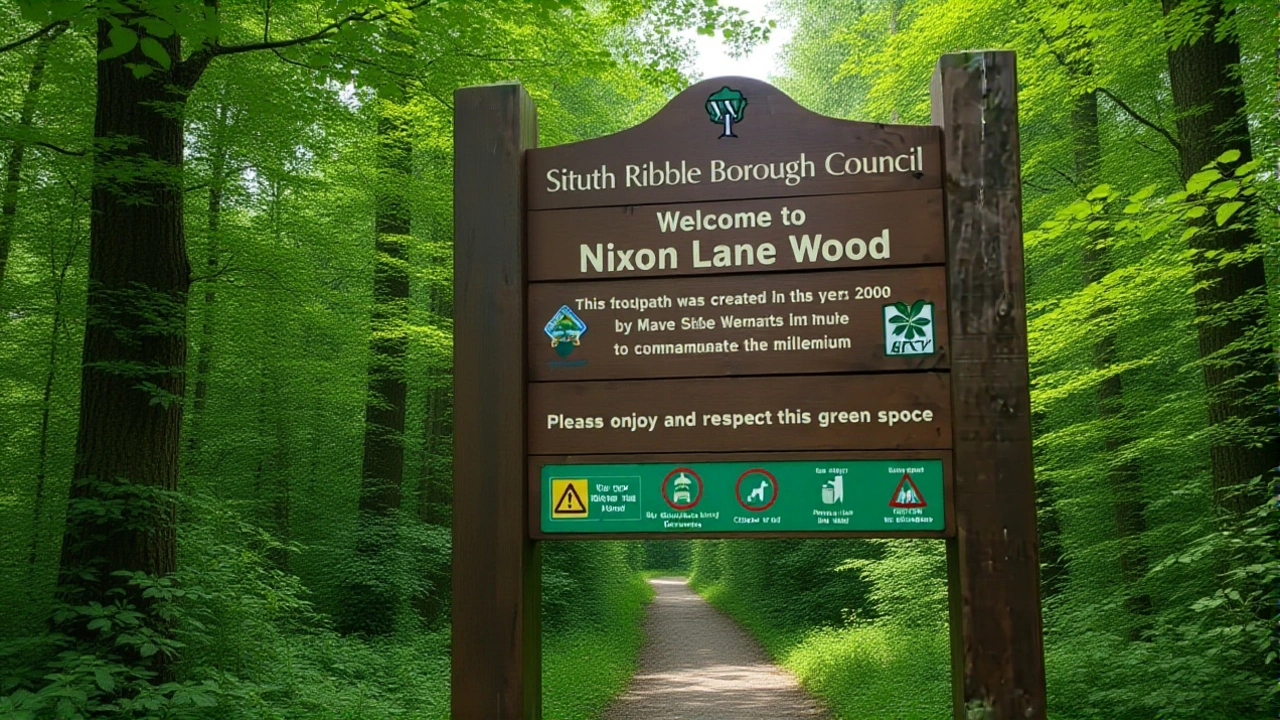When residents of Leyland showed up in droves to voice their concerns over a proposed horse trail through Nixon Wood, they weren’t just making noise — they were making history. On November 20, 2025, South Ribble Borough Council officially confirmed what the community had made clear: Nixon Wood will remain a pedestrian-only sanctuary. No horses. No bikes. Just trees, birdsong, and walkers enjoying the quiet. Here’s the thing — this wasn’t a bureaucratic decision made behind closed doors. It was a rare, loud, and unmistakable case of local democracy working exactly as it should. The proposal came from the Ulnes Walton Bridleway Association, a grassroots group that’s long advocated for equestrian access across South Ribble’s green spaces. They’d offered grant funding to install a concessionary bridleway through Nixon Wood, a 12-acre woodland tucked into the residential area of Moss Side. The idea? Allow horse riders to use a designated section of the existing footpath during off-peak hours, with signage and minor landscaping to separate users. But the community didn’t buy it. Over 87% of the 1,243 written responses submitted during the summer 2025 consultation opposed the plan. At the public meeting held at Leyland Town Hall in July, nearly 200 residents packed the room. One woman, 78-year-old Margaret Hesketh, stood up with her walking stick and said: "I come here every morning for my arthritis. I don’t want to hear hooves behind me. I don’t want to dodge manure. I want peace." The room erupted in applause. Councillor Matthew Farnworth, Cabinet Member for Parks, Events and Culture, listened. Then he acted. "We’re a listening council," he said in the official announcement. "And this time, the community told us exactly what they needed. We’re not ignoring horse riders — we’re just saying Nixon Wood isn’t the place." The twist? The council didn’t just say no — they said yes to something better. While rejecting the bridleway, they committed to improving the existing pedestrian paths: installing new lighting along the main trail, adding benches every 150 meters, and repairing eroded sections of the footpath that had become muddy after winter rains. A £120,000 allocation from the council’s Green Spaces Enhancement Fund has been earmarked for these upgrades, with residents invited to vote on design choices in early 2026. "We’re not stopping progress," Farnworth added. "We’re redirecting it." The Ulnes Walton Bridleway Association didn’t walk away empty-handed. The council has pledged to work with them on identifying alternative routes — specifically along the disused railway line between Ulnes Walton and Charnock Richard, where soil conditions are more suitable and fewer residents live nearby. A feasibility study is already underway, with a draft proposal expected by March 2026. This isn’t the first time a UK woodland has become a battleground between user groups. In 2022, Thetford Forest in Norfolk rejected a similar bridleway after 92% of respondents opposed it. In 2023, Wyre Forest in Worcestershire approved a shared-use trail — but only after installing motion-sensor audio alerts and mandatory rider training. Nixon Wood’s outcome shows a different path: prioritizing quiet, passive recreation over multi-use expansion. For now, the crunch of leaves under walking boots remains the only sound in Nixon Wood. The horses will find another way.
Why This Matters Beyond Leyland
The decision in Nixon Wood reflects a broader national shift. As urban green spaces shrink and mental health concerns rise, more communities are demanding quiet, predictable environments — not shared, contested ones. A 2024 study by the University of Manchester found that 68% of urban walkers in England now prefer paths with no other users. That’s up from 41% in 2018. Local councils are catching on. South Ribble’s approach — listening, then acting with clear alternatives — is becoming a model. "It’s not about saying no to one group," says Dr. Eleanor Pike, a sociologist at Lancaster University who studies urban green space policy. "It’s about saying yes to equity. If horse riders have other viable routes, then preserving a space for walkers isn’t exclusion — it’s balance."What’s Next for Nixon Wood?
Residents will be invited to a design workshop in January 2026 to choose path materials, bench styles, and signage. The council has promised transparency: all decisions will be published online, and construction is expected to begin in April 2026, weather permitting. Meanwhile, the Ulnes Walton Bridleway Association is already scouting the Charnock Richard corridor. Their next proposal, they say, will include wider gates, drainage channels, and a dedicated rider training program. Whether it gains traction remains to be seen — but for now, Nixon Wood is safe.
A Quiet Victory for Community Voice
What’s remarkable isn’t that the bridleway was rejected. It’s that the council didn’t just rubber-stamp the outcome. They validated the process. They thanked every respondent. They published the full consultation data. And they didn’t treat the horse riders as adversaries — just different users with different needs. In an age of polarized politics, that’s rare. And maybe, just maybe, that’s the real story here.
Frequently Asked Questions
Why did residents oppose the bridleway when the association offered grant funding?
While the Ulnes Walton Bridleway Association offered £45,000 in grant funding, residents were more concerned about safety, noise, and the loss of tranquility. Many feared horse manure, sudden hoofbeats, and reduced accessibility for elderly walkers and parents with strollers. The funding didn’t outweigh the perceived risk to the woodland’s peaceful character.
Are horse riders banned from all public paths in South Ribble?
No. Horse riders still have access to over 18 miles of designated bridleways across the borough, including routes along the River Ribble towpath and the disused railway corridor between Ulnes Walton and Charnock Richard. The council is actively working with the Bridleway Association to expand these routes — just not into Nixon Wood.
What specific improvements are planned for Nixon Wood’s footpaths?
Planned upgrades include non-slip, permeable surfacing to replace muddy sections, solar-powered pathway lighting, 12 new timber benches spaced every 150 meters, and interpretive signage about local flora and fauna. A community vote on design options will be held in January 2026, with construction scheduled to begin in April 2026.
How did the council ensure the consultation was fair and representative?
The council distributed 3,000 paper surveys to households within a 1-mile radius of Nixon Wood, held two public meetings (one specifically for equestrians), and partnered with local schools and senior centers to reach underrepresented groups. Over 1,200 responses were collected, with 87% opposing the bridleway — a statistically significant majority.





